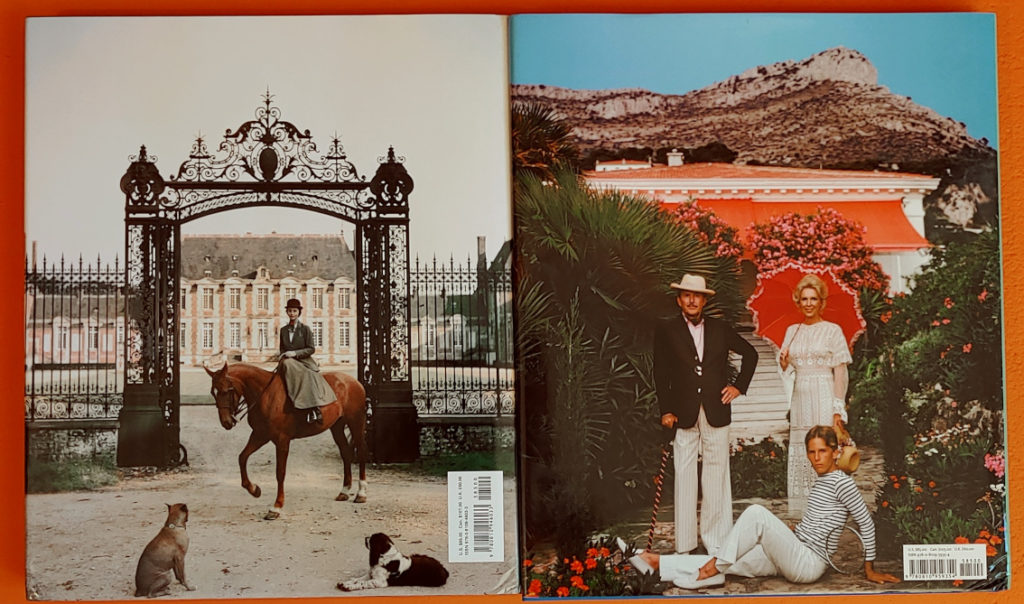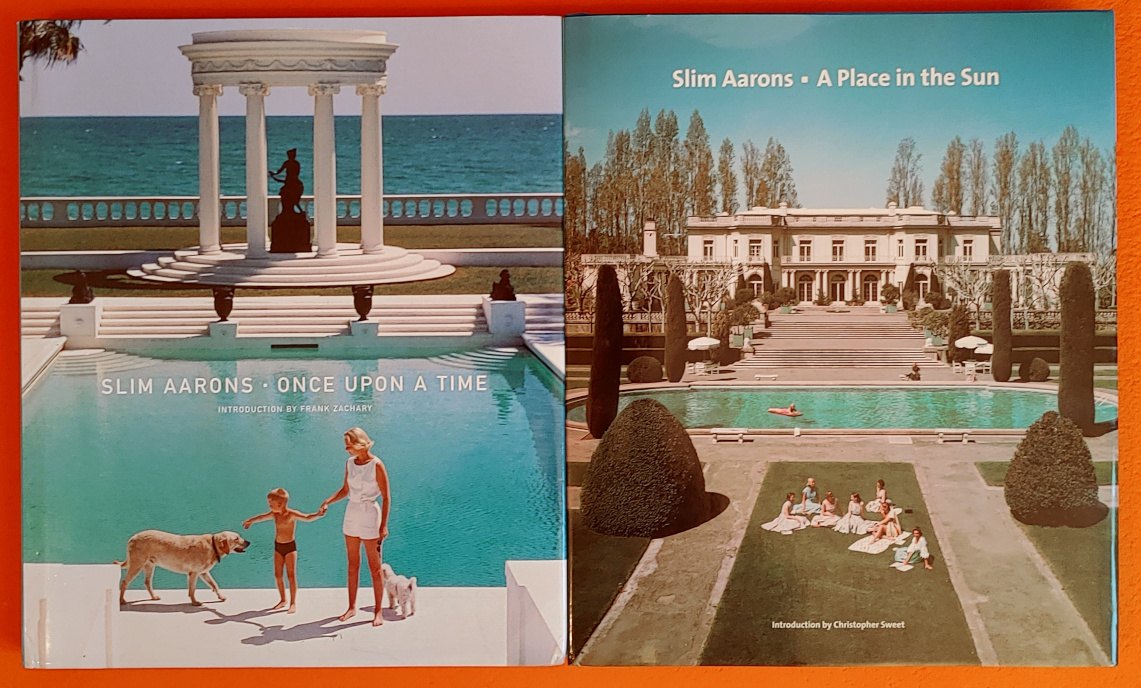Slim Aarons sold his photo archive in 1990s to Getty Images, and we can be most happy he did. Mark Getty himself looked through the archives in Slim Aarons cellar and they agreed a deal on the spot. The new owners of the archives decided to use the pictures and pay homage to the photographer – through that it came to a revival of Slim Aarons art. Maybe he’s more famous now then he was during his lifetime. Slim Aarons got his orders mainly from magazines as every photographer does. Few photographers had the time and patience to take care of their own legacy and publish books. Books endure – magazines are for the moment only; they show the zeitgeist. The spirit of a time is elusive and can be easily forgotten. We are very lucky the pictures endured and can be admired now again in very beautiful coffee table books.
Slim Aarons composed only one book with his photographs whilst being active, in 1974. It needed Getty Images and Abrams’ editor Christopher Sweet to publish “Once upon a Time” in 2003 and two years later “A place in the Sun”. Slim Aarons died in 2006 – the other coffee table books following the first ones were made without his active support. I own 5 or 6 of them by now – there will be more coming up. For this article I concentrate on “Once upon a Time” and “A place in the Sun”.
Reading the foreword of “Once upon a Time”, written by Slim Aarons himself, I get the impression of a down-to-earth guy, a friendly human being and a witty man. He started his photographic career during World War II, accompanying the American troops in Europe. After the war he decided to stick with photography, but not with politics and war. He chose the good sides of life and embarked on what he himself called “photographing attractive people who were doing attractive things in attractive places” (direct quote from his foreword). He never worked in a studio with clients, but photographed them in their houses/palaces, on the beach and wherever else they passed their time. He never tried to corner his subjects or let them look bad – this craving for letting the famous pay for their fame through embarrassing them seems to be a later phenomenon. During the last century, at least till the 1980s, there was less jealousy and scandalisation in photojournalism. Hunting Royals, politicians, singers or movie stars to let them look bad, to shame them under the umbrella of being “just honest” is mainly a phenomenon of the 1990s and after. Of course, in the old times a lot was manipulated to protect the reputation of some pretty racy or even criminal, but famous, people. What it means to be a person of public interest today we can only try to understand. Being in the press’ focus must be daunting. One can only wish to the person of public interest that he/she becomes rich or powerful on the way. Sometimes an awfully high price is paid for 15 min of fame.

Slim Aarons showed the rich and famous as they wanted to be seen and therefore was everybody’s friend. Not the worst position, when one can choose. Some of the pictures show more than the clients might have understood – of course vanity and self-perception can look weird. There are two good examples on the back covers of both of the books. The family of three aristocrats in Monaco, photographed in 1976, look to today’s eyes a bit overdone, I think. Maybe an adviser would direct them to other clothes, a different facial expression. On the other hand, a shot not being influenced by stylists and photographers is a rare example of honesty today. “Once upon a Time’s” back cover is from the 1950s and could have been a painting from 1850. A French noblewoman riding a horse in front of the family castle, two dogs in attendance – can it get more traditional?
All faces look happy and Slim Aarons has done the right thing. Many more photographs like the ones on the back covers are inside the books. People chatting, people partying, people standing for an informal portrait – all looking their very best. Slim Aarons gave people the chance to present themselves as they saw themselves and wanted to be seen. Through his pictures he gives us an unmasked glimpse on people from another social group and makes us dream about being part of the “happy few”. There are attractive people in the pictures, but not photoshopped supermodels. Each of us would fit in his pictures (if clad the right way) and not stand out like a sore thump.
The stately homes of rich American aristocrats, pictured in all their splendour in the sun, with proud owners and guests in front of the big swimming pools are another famous feature in all of Slim Aarons’ books. They look like a still life, like painted, in spite of the human beings. Although the beauty of the buildings and people is obvious, they look static to me. Maybe cold is a better word. The colours play a big part here – the houses are white, the lawn green, the pool turquoise. Almost every cover for a Slim Aarons book has one of those iconic, cold pictures as a cover. Strange, as they are so different in comparison to his other photographs.
Of all his books I own, only the front cover of “La dolce Vita” is different. Colours are warm, green and orange dominate, no pool around, the shape of the house is less strict.
How can one summarize Slim Aarons’ books without showing more of his photos? He was a positive human being, he loved life, he was not a jealous man, but happy for others to be happy. His legacy is strong, his experiences wide. It takes a wise man to see bad things and decide to celebrate life afterwards instead of becoming gloomy. Every fame Slim Aarons has and had is well deserved. The difference to today’s great photographers and their books and their subjects is the lack of artificial styling and no use of photoshop. There is a lightness in Slim Aarons pictures, an easy going way that seems to have been lost towards the end of the last century.
All rights to the books belong to:
Aarons, Slim: A Place in the Sun, 2005, photographs by Slim Aarons, edited and introduced by Christopher Sweet, Photographs courtesy of Getty Images. Published by Abrams, printed and bound in China, ISBN: 978-0-8109-5935-4
Aarons, Slim: Once upon a Time, 2003, photographs by Slim Aarons; introduction by Frank Zachary; Editor: Christopher Sweet. Published by Abrams, printed and bound in China, ISBN: 978-0-8109-4603-3

